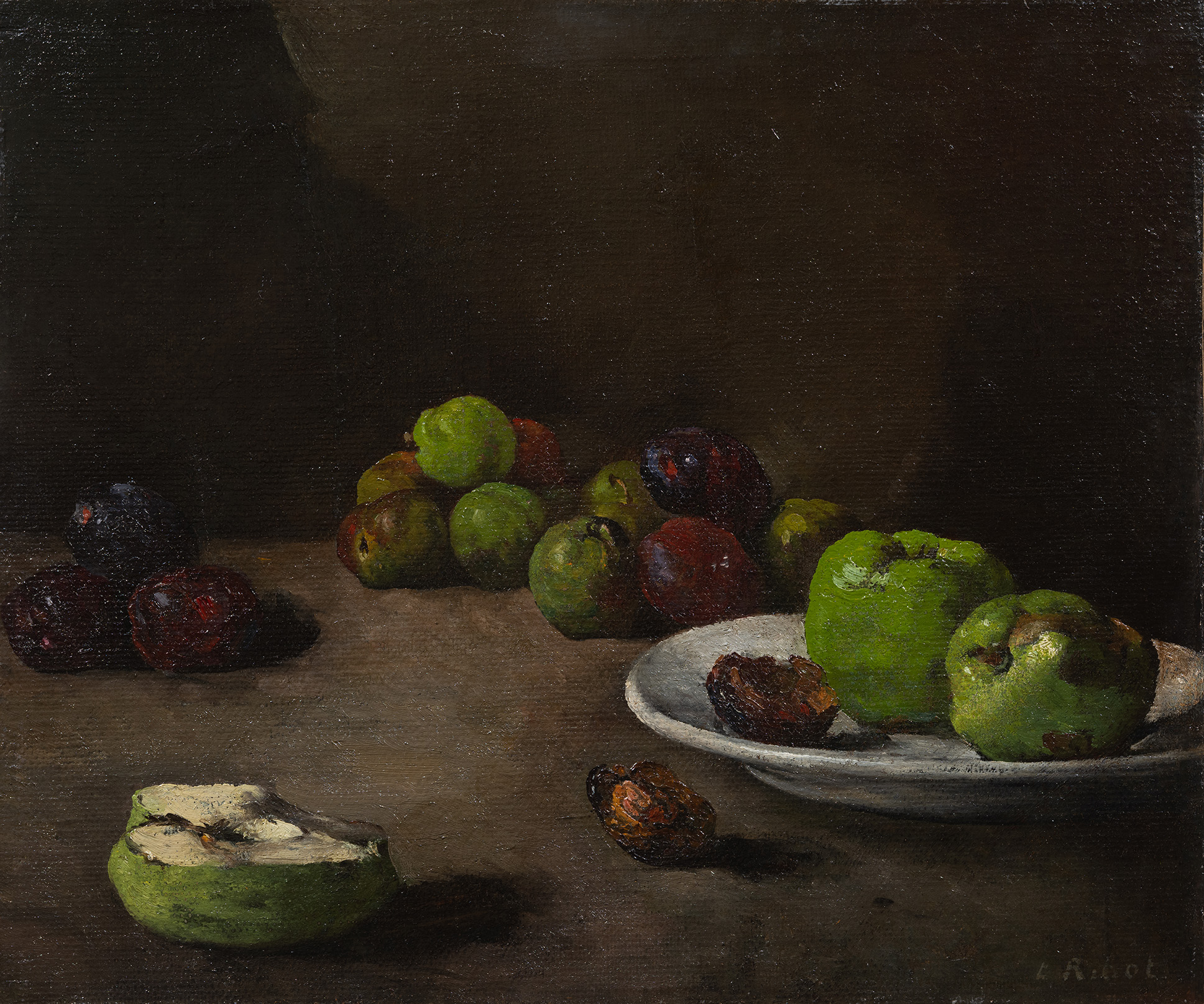Among the seventy-six paintings recorded in Ribot’s studio at the time of his death – and sold five years later – no fewer than fifteen were still lifes. These works hold the key to the artist’s painting practice. Ribot himself told the journalist Thiébault-Sisson: “If you think I paint still lifes simply for the pleasure of depicting a cut of beef, an apple, or a fish, you are mistaken. What I find valuable is the infinite variety offered by the diversity of materials. For me, still life is the most instructive and profitable preparatory exercise”.1
Ribot’s still life production was fully in step with the mid-19th-century revival of interest in masters from the past Jean-Siméon Chardin,2 in particular strongly influenced artists such as François Bonvin and Antoine Vollon, for whom the genre became a hallmark. Ribot, who found a steady market for his still lifes, approached the genre in a darker and more forceful manner than his Realist contemporaries: his compositions are less intimate and generally larger, his objects rougher and more rugged, ultimately reflecting the Spanish roots of his inspiration.
Our Still Life with Fruit exemplifies this conviction. The vivid green of the fruit stands out powerfully against the dark background, which recalls the minimalist still lifes set against dark backgrounds of Francisco de Zurbarán. Fresh fruit is placed next to decaying ones, half-eaten plums and apples, and a discarded pit. The earthy palette and focused lighting create a sombre, contemplative atmosphere, while Ribot’s tactile brushwork lends substance to the bruised skins and dense shadows. In this attention to materiality, Ribot aligns himself with the Realist still lifes of Bonvin and Vollon, situating his work within a wider dialogue on the expressive and moral possibilities of humble objects.
1 Thiébault-Sisson, F., 1891, “Théodule Ribot et son œuvre” in Le Magasin pittoresque, 30 September 1891, p. 306.
2 Weisberg, G., 1979, Chardin and the Still-Life Tradition in France, Cleveland, The Cleveland Museum of Modern Art.
